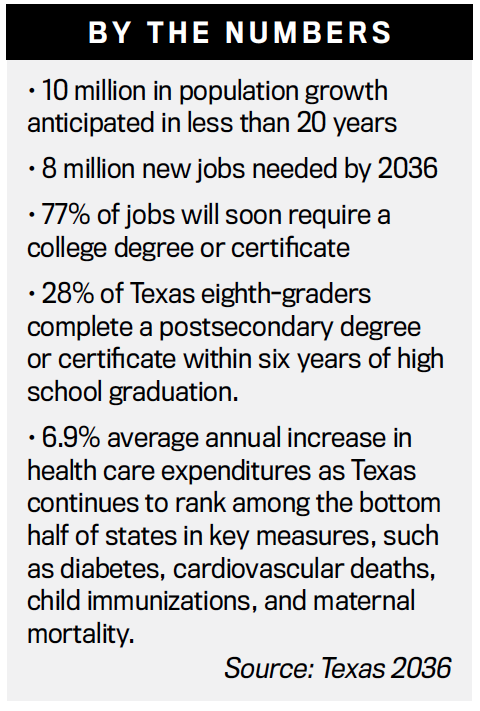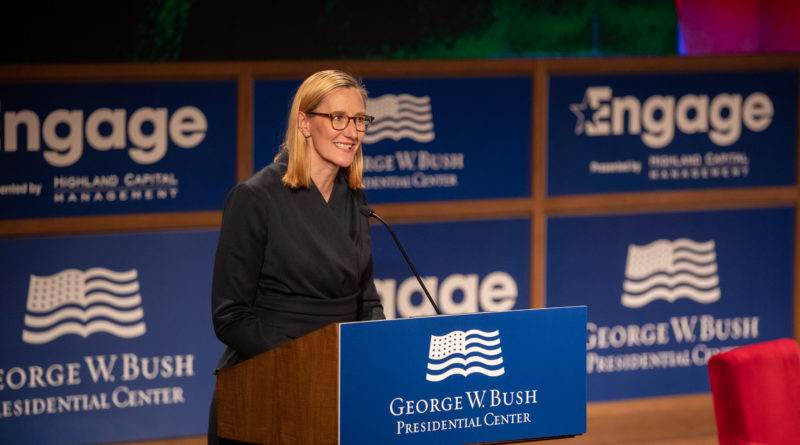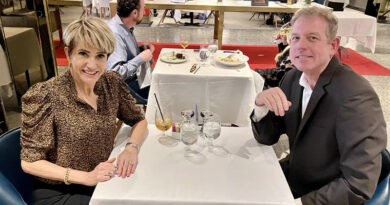STEM To Play Key Role In the Future of Texas
Texas has plenty of opportunity for growth and innovation in health care, but many challenges, as well, as the state nears its 200th birthday in 2036.
One of the challenges University of Texas MD Anderson Cancer Center president Peter Pisters identified may come as a surprise to residents in and near the Park Cities — getting children vaccinated for HPV (human papillomavirus).
“The reality today is that 30-50% of cancers could be prevented if we could just deploy what we know works, and in Texas, that means, for example, HPV human papillomavirus vaccination,” Pisters said. “The lowest vaccination rates are in the areas of the state with the highest health literacy — in the Highland Park suburb of Dallas.”
By contrast, the highest vaccination rates are in places like the Rio Grande Valley, he said. “We go into the Rio Grande Valley and approach mothers with a vaccine, and they learn… this vaccine prevents against six different types of cancer. Their reaction is, ‘Bring it on. I want my child vaccinated.’”
Pisters was among the panelists at the George W. Bush Presidential Center for a recent discussion on the future of Texas.
Another panelist, Lyda Hill Philanthropies CEO Nicole Small, said her organization is working with MD Anderson and the American Cancer Society.

“If we want our kids to grow up and be healthy and be productive workers, we do need to teach them about prevention,” Small said.
Another theme that emerged from the discussion is the significant role STEM (science, technology, engineering, mathematics) education will play in the workforce of the future.
“We need to get kids excited about, enthusiastic, and inspired to pursue careers in STEM,” Small said. “We’ve got to give them visibility into what those careers actually are, so we try to invest across that pipeline from when they’re really young all the way through university.”
She said North Texas has lagged behind Houston and Austin in building a biotechnology sector.
“We’re not doing as good a job building, I think, a business around medicine here, and so there’s a lot of really exciting opportunity to build a more robust biotech sector,” Small said.
Pisters called for a “massive federal investment in STEM.”
“We have a foreign dependency right now for these STEM fields, which is a risk, and it’s also an opportunity,” he said. “We need our kids to really dive in and to be supportive of STEM programs for the future.”
The panel also touched on the future of energy in the state.
Center for Houston’s Future CEO Brett Perlman said he hopes Houston, known for its role in the oil and gas industry, becomes a hub for low-carbon energy also.
“We have the skills, the manpower, the resources, really, to lead in this revolution of creating this next generation of energy,” Perlman said.
Perlman also said Texas is drawing new people from all over the world, and it’s important for Texas’ growth to treat immigrants as a resource and source of strength.
“A lot of those people are coming here for the opportunities to create new drugs, to be part of the medical center we have, and so, really, what we need to do is treat that as a resource, not as a problem,” Perlman said. “If we think about that in a different way, that immigrants are our strength, I think that will be a secret weapon.”









